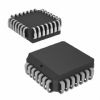CY7B9911V5JC: Features: • All output pair skew <100 ps typical (250 max.)• 3.75- to 110-MHz output operation• User-selectable output functions-Selectable skew to 18 ns-Inverted and non-invert...
floor Price/Ceiling Price
- Part Number:
- CY7B9911V5JC
- Supply Ability:
- 5000
Price Break
- Qty
- 1~5000
- Unit Price
- Negotiable
- Processing time
- 15 Days
SeekIC Buyer Protection PLUS - newly updated for 2013!
- Escrow Protection.
- Guaranteed refunds.
- Secure payments.
- Learn more >>
Month Sales
268 Transactions
Payment Methods
All payment methods are secure and covered by SeekIC Buyer Protection PLUS.

 CY7B9911V5JC Data Sheet
CY7B9911V5JC Data Sheet







